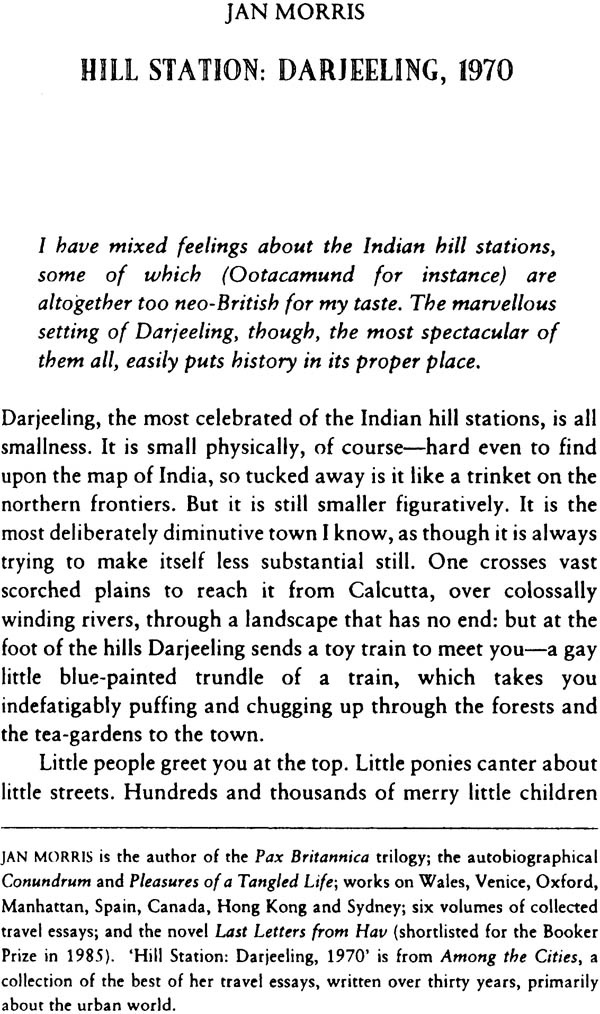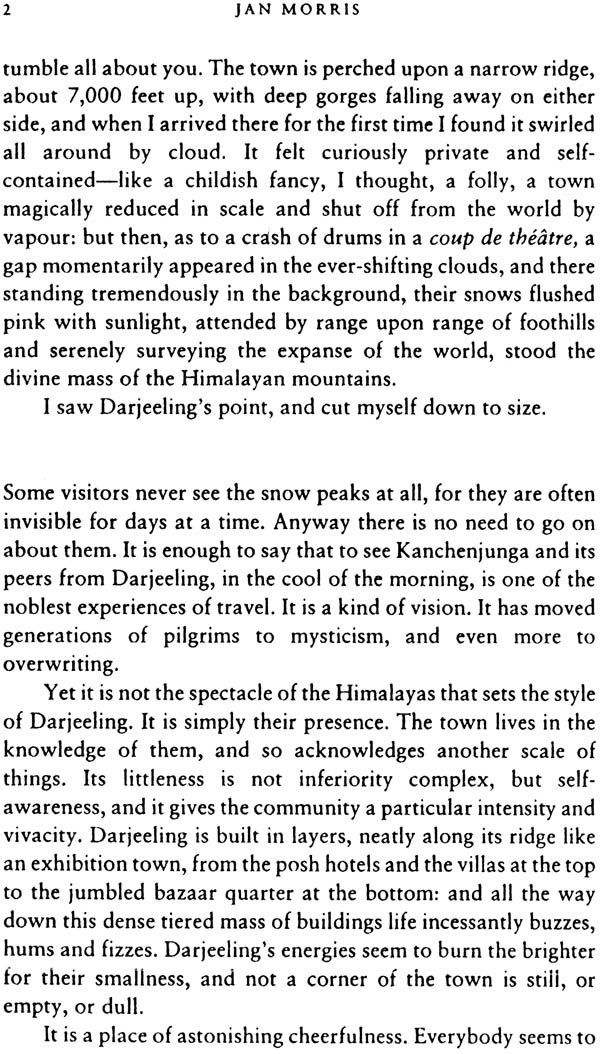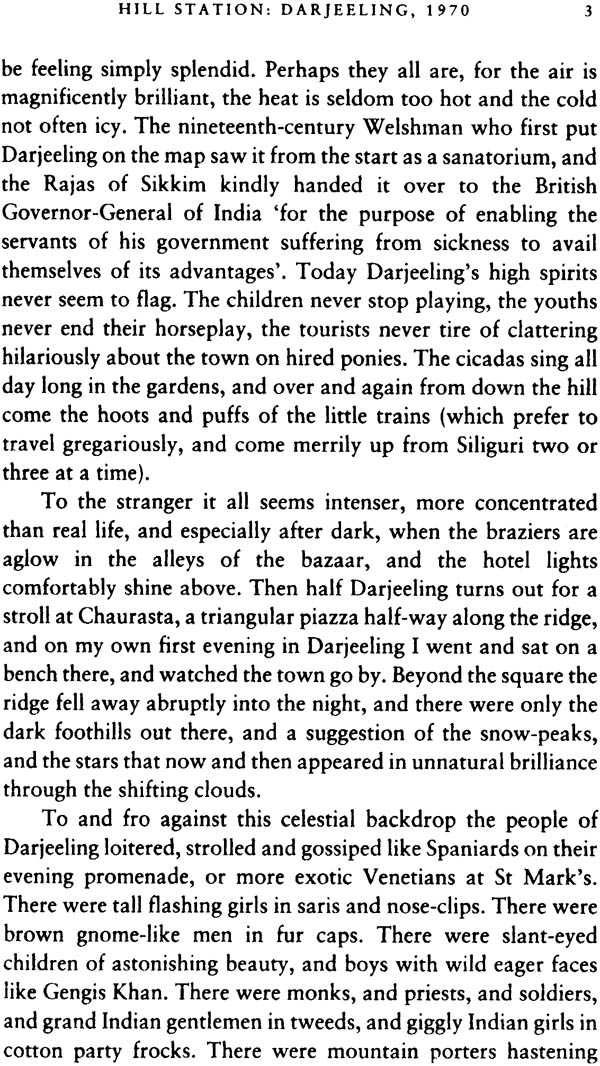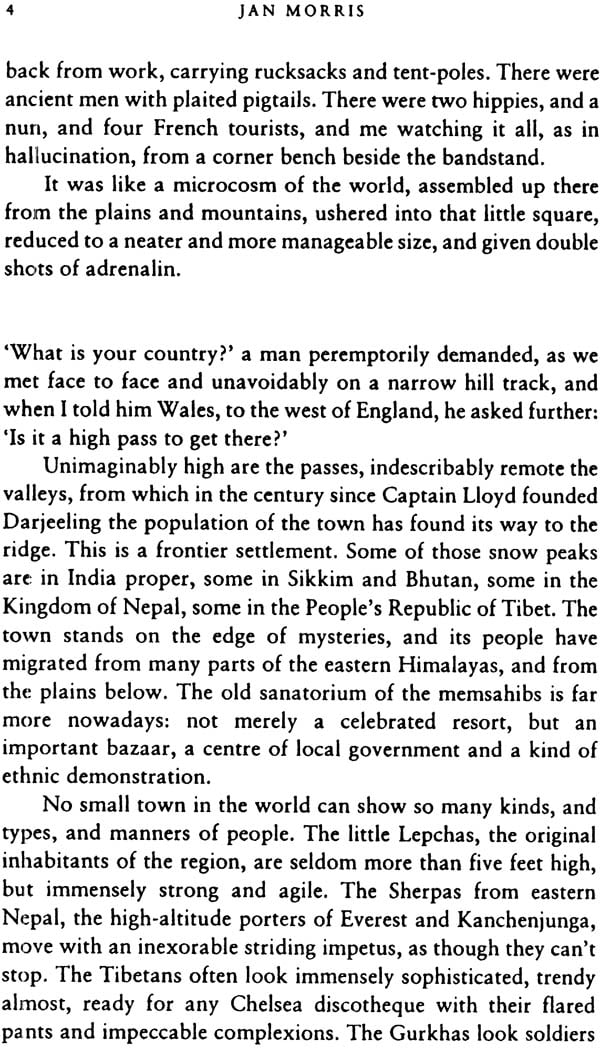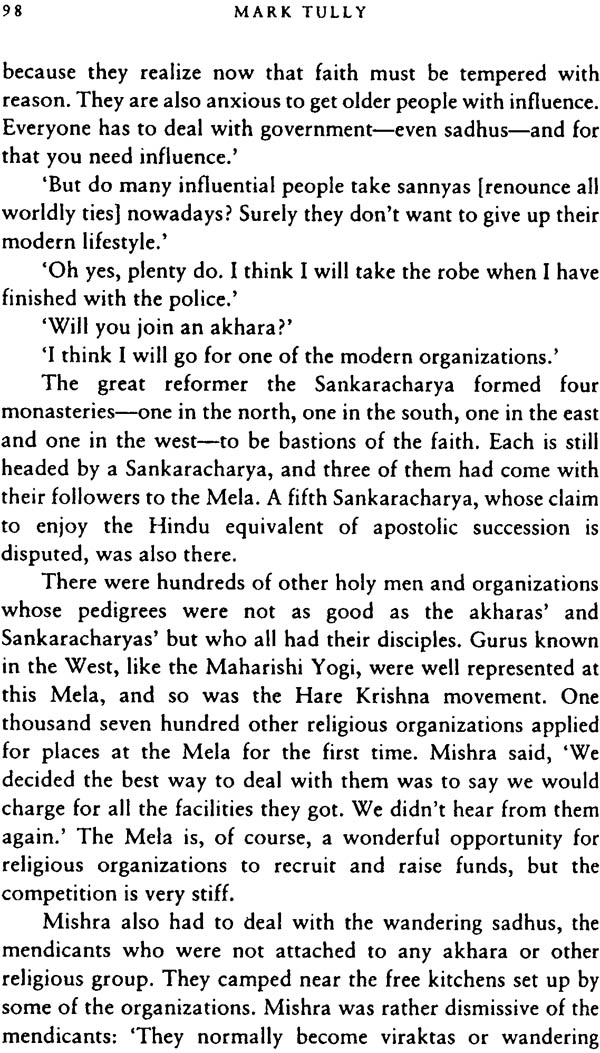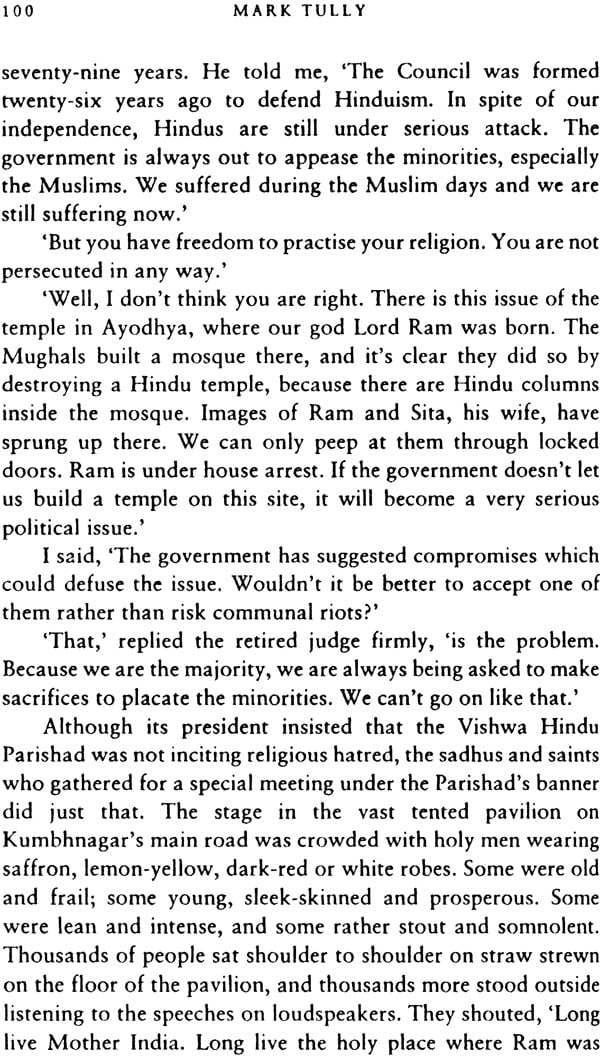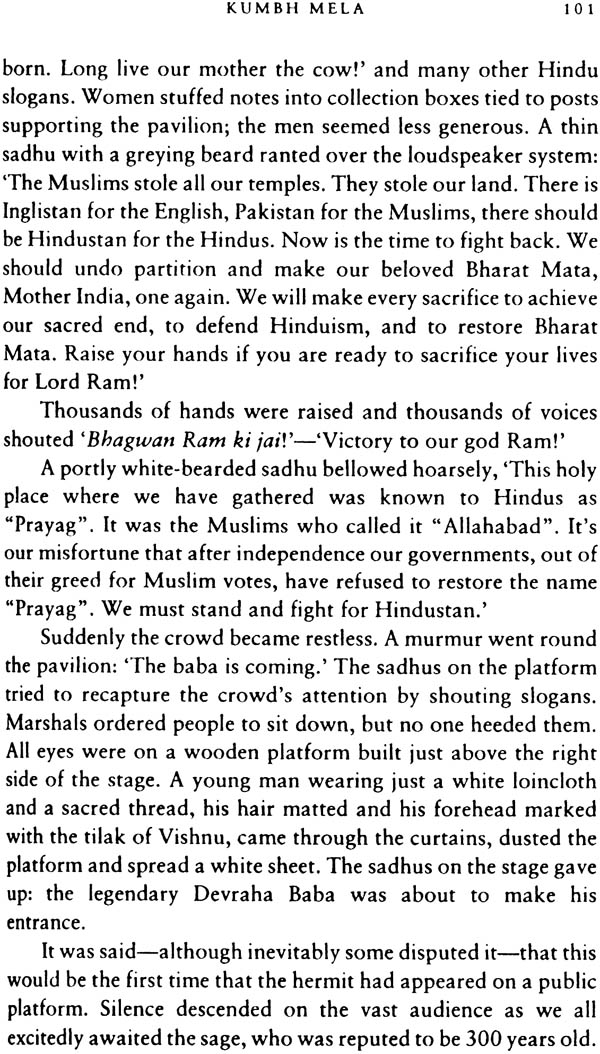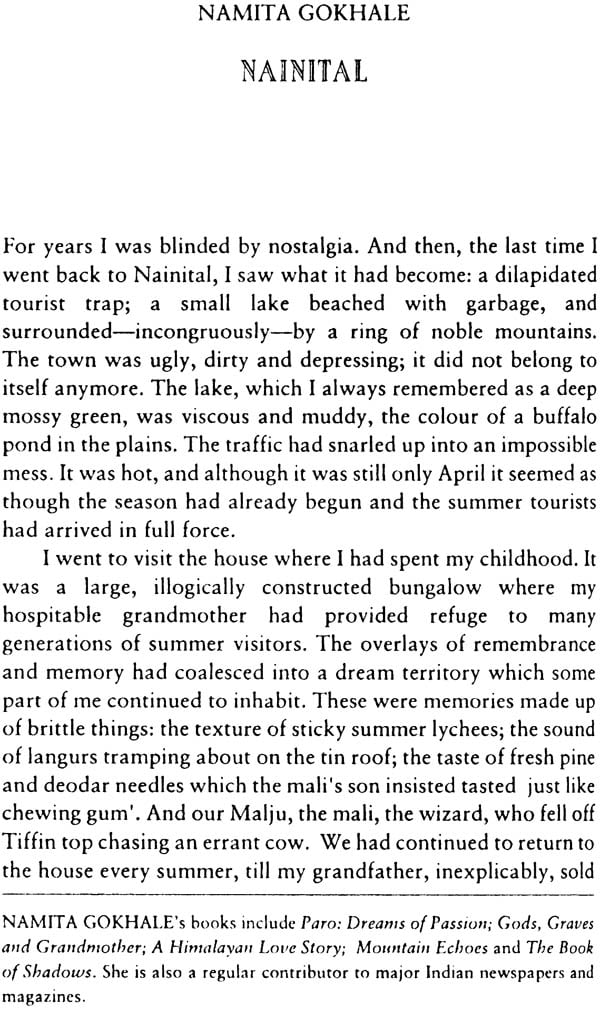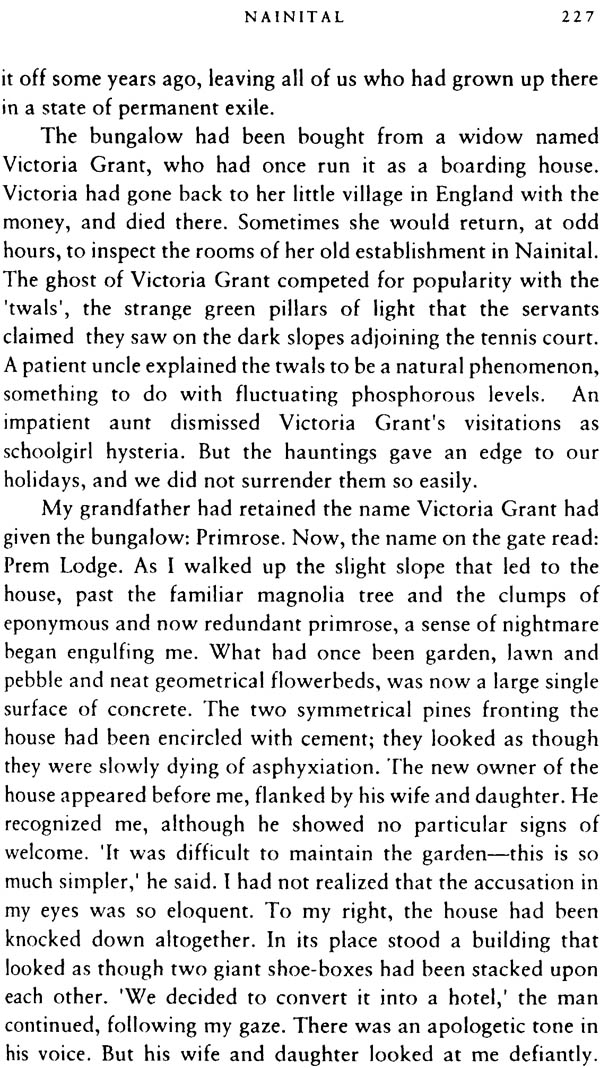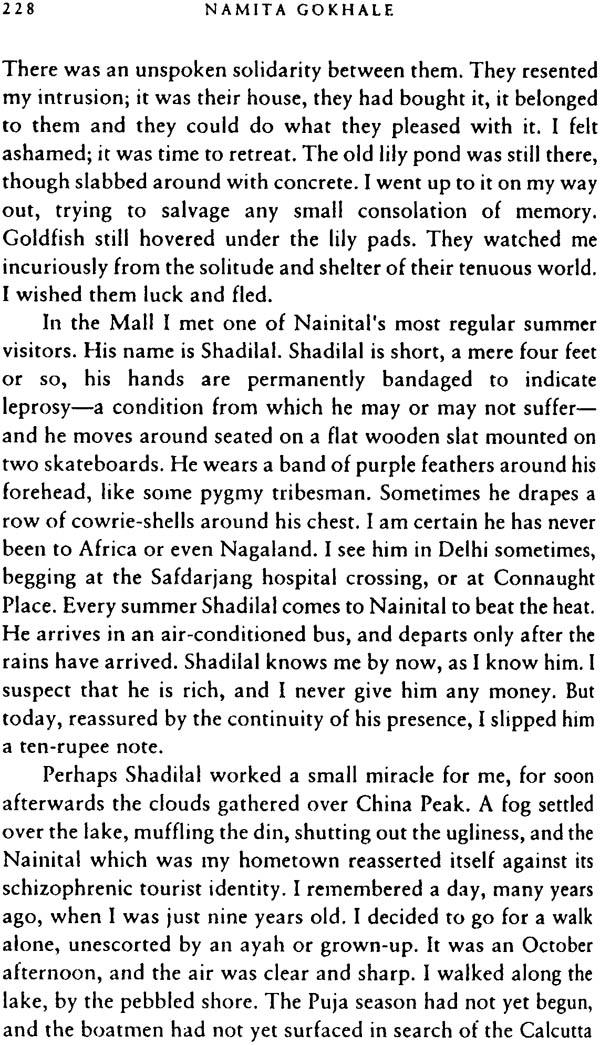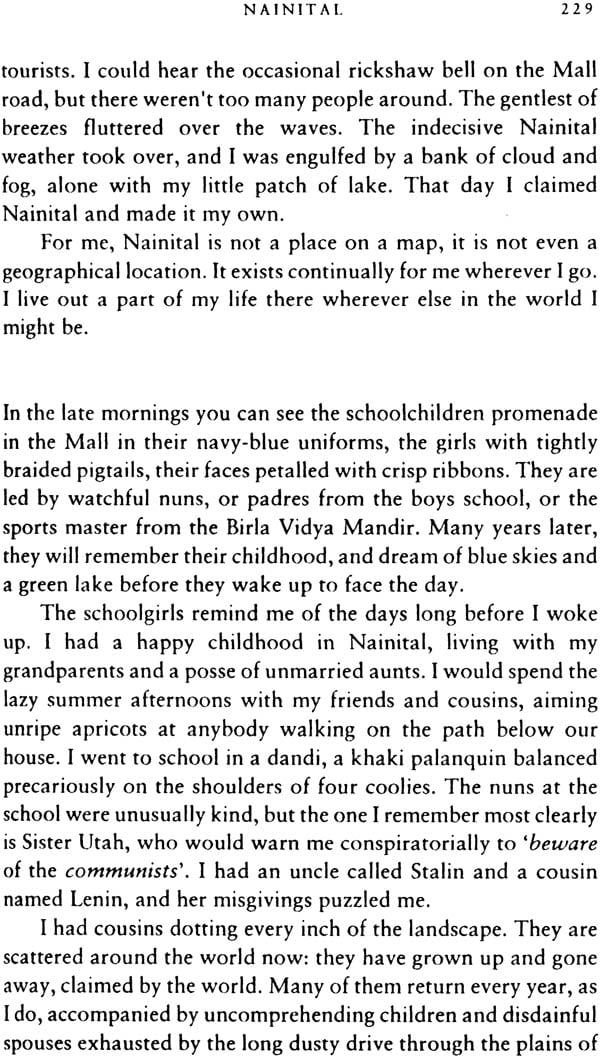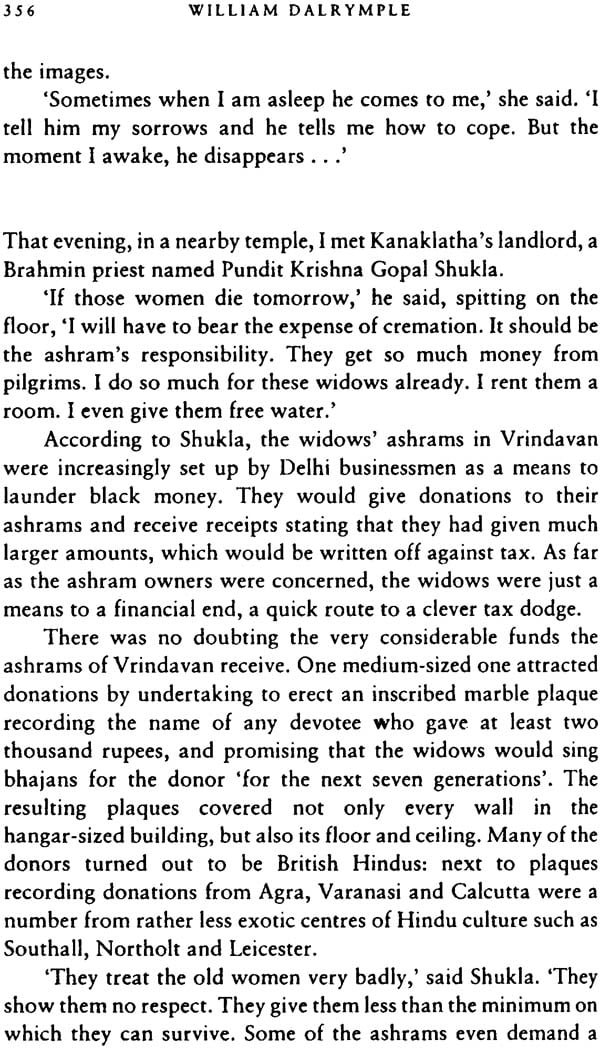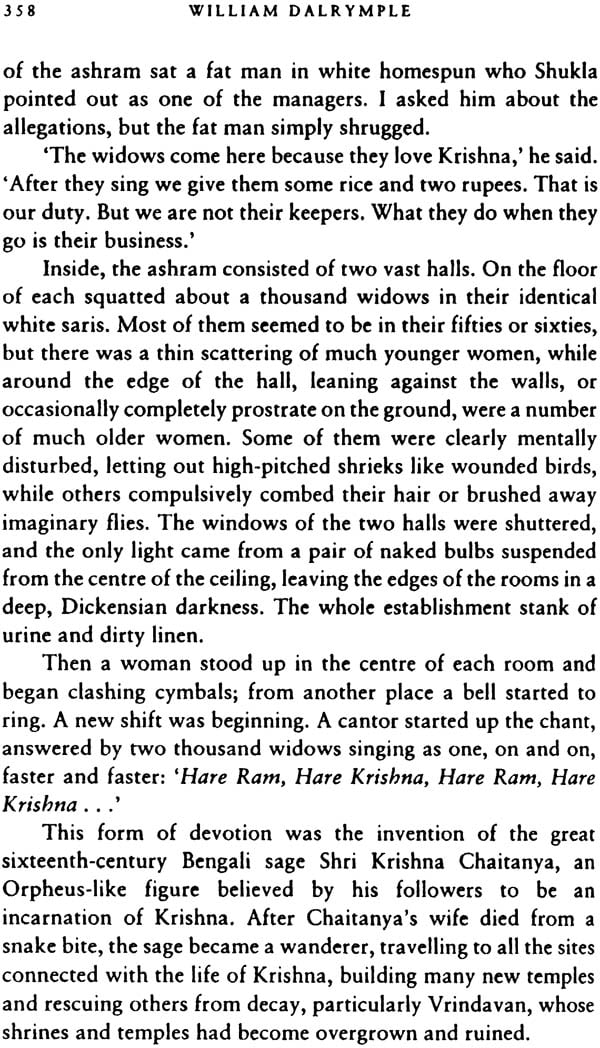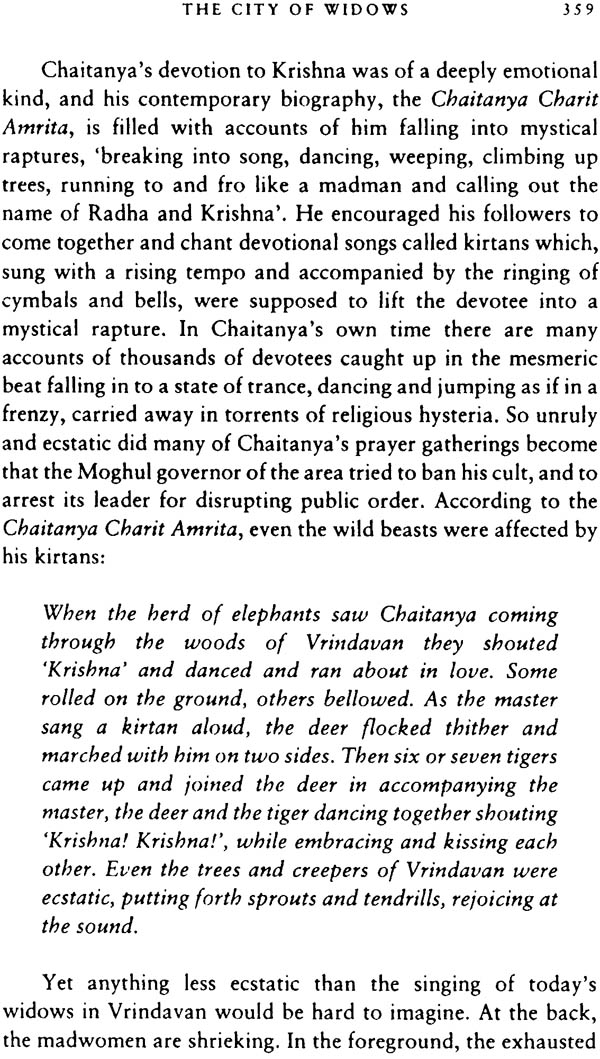
The Penguin Book of Indian Journeys
Book Specification
| Item Code: | NAH468 |
| Author: | Dom Moraes |
| Publisher: | Penguin Books India Pvt. Ltd. |
| Language: | English |
| Edition: | 2004 |
| ISBN: | 9780141007649 |
| Pages: | 369 |
| Cover: | Paperback |
| Other Details | 8.5 inch x 5.5 inch |
| Weight | 350 gm |
Book Description
A country the size of a continent, home to a sixth of humanity. An ancient civilization that is also a modern democratic republic only half a century old. A nation that is several countries in one. As in ages past, India continues to fascinate travellers who are, in the words of Dom Moraes, the editor of this anthology, 'startled, annoyed, and attracted by its colossal, inexplicable diversities'. More has been written about it than any other Asian country.
The Penguin Book of Indian Journeys brings together pieces by some of the best contemporary writers in the English language. Travel writers-Indian and foreign, as well as compulsive wanderers without a home engage with the comforts and the chaos, the convictions and the contradictions of modern, independent India. R.K. Narayan does a leisurely tour of Karnataka, taking the 'emerald route' up and down the Ghats; V.S. Naipaul rages through hot, crowded and apathetic New Delhi; and Vikram Seth flies back, after months of hitch-hiking in strange lands, to familiars, respite and Delhi customs. Ruskin Bond explores the laid-back Agra of the 1960s in the shadow of the unchanging Taj; and midnight's child Salman Rushdie returns to the land of his birth to try and answer a riddle: Does India exist? At the Kumbh Mela, the world's biggest religious festival, Mark Tully meets a 300- year-old sadhu. In the forests of the Western Ghats, Abraham Verghese hopes to run into the brigand Veerappan. Jan Morris rides the toy train to 'the most celebrated of Indian hill stations' that is 'all smallness'. And Bruce Chatwin hits the road with the entourage of the post-Emergency, out-of-power Indira Gandhi to see 'Madam in action'.
Also in these pages are Paul Theroux, Khushwant Singh, William Dalrymple, Andrew Harvey, Amit Chaudhuri, AlIen Ginsberg, Joe Roberts and P. Sainath, among others, taking us to places as familiar or remote as Jaipur, Ladakh, Behmai and the Cut-off Area.
Beginning with a brilliantly insightful introduction by Dom Moraes, this anthology provides an absorbing, lively and always interesting portrait of life in contemporary India.
Dom Moraes was born in Bombay in 1938. At nineteen, he published his first book of poems, A Beginning, which won the Hawthornden Prize, at that time the most coveted literary award in England. His second book of verse, Poems (1960), became the Autumn Choice of the Poetry Book Society. Apart from these, he has published eight other collections of poems and over twenty works of prose, including a biography, Mrs Gandhi, the memoirs Never at Home and My Son's Father, and Out of God's Oven, a book on contemporary India. Dom Moraes lives in Bombay.
I once lunched in Mumbai with two Japanese businessmen. Like many other businessmen, not necessarily Japanese, they seemed cloned from a prototype, from what they thought, wore, and were, to what they ate: T-bone steaks and tiramisu, I've forgotten how I met them; but one unusual observation they made (jointly, so to speak) has stayed in my mind for years.
At some point they said they found it difficult to understand the minds of Indian businessmen, because Indians weren't Asians. I may have seemed surprised, for they explained the remark. Physically, they said, Indians were different from other Asians. In the north of the subcontinent, some true Asians lived, such as the people of Nepal, Sikkim, and Bhutan, and the Assamese. But the other Indians didn't look like Asians, or think like them.
Semitic peoples who followed Islam lived west of India, and the 'true Asians', mostly Buddhists, lived east of it. The Hindus, according to the Japanese, were unique to the subcontinent, a separate race. They had persecuted the Buddhists; only a few were left. The Muslims and Christians who lived in India were mostly converts from Hinduism. Therefore most of the Indian population was Hindu, or of Hindu descent, but not Asian.
The idea that India is somehow different from other countries has fascinated travellers, from prehistory to the present. It has always been several countries in one, with distinct regional cultures and a definite divide between the Dravidian south and the Aryan north. Travellers have continually been startled, annoyed, and attracted by its colossal, inexplicable diversities. But they are understandable, for India is bigger than Europe.
India describes itself as a secular state. At the moment it isn't. It has been Hindu, as my Japanese friends said, since the religion first evolved, and Indians and the people of the Indian subcontinent, some of whom are widely scattered, are the only ones in the world who practise it. (There are also, of course, a few eccentric foreign converts, followers of Hindu-based cults, and the Balinese, descended from Indian colonists.)
Some writers have said Hinduism made its followers docile and submissive. Certainly the Hindus remained passive under successive conquests and occupations for nearly a millennium. Some are now returning to their original roots, though in very disquieting ways, for they are fed a violent, recidivistic version of Hinduism. Some of the essays in this book discuss its genesis.
Many people over the centuries undertook journeys to India. It came under longer, stronger cultural influences from Europe than any other Asian country. More was written about it than any other; more was known about it. Foreign writers (from a number of nations) produced more literature about India than Indians did. Its differences and oddities, so often described, became slightly devalued by time. So did the literature about it.
The generation of Indians that followed midnight's children has shown more curiosity about its country than its forebears did. These younger writers are able to bypass exotica. They are able to describe what life in India feels like, day by day, because they live it. The journeys they make are to some extent intellectual, to examine issues that affect India. But they examine these issues by talking to the people affected by them.
All good travel literature describes the discoveries made by the writer: of things or of places, of other people, or of himself. Most good travel writing on India today, whether by foreigners or Indians, discovers and reveals-sometimes with surprise-the people of the country. Earlier, most foreign writers had limited access to rural people, or to the urban middle class and poor. The Indians they knew were almost entirely privileged Indians.
India is curious in that it has always had an invisible majority. Travel literature of the past showed it only as a faceless mass, present but unidentifiable. Perhaps foreign writers are more adventurous now, or perhaps they could never reach beyond the privileged classes before. But they write more about the underprivileged these days. For them it is the discovery of another India that always existed, but nobody visited or knew.
The Indian travel writers are better equipped to enter this India. They know it more closely (though not always) than foreigners do. Some of the essays in this book portray small people, neglected and helpless in their lives, or belligerent and brutal, and report what they say. They reveal that there is not only a second, unexplored India, but another, larger nation of Indians whose views, unreported by the media, are largely unknown.
In some ways India has become even more mysterious as it becomes better known. It has developed even more problems than it already had. They are partly identified in this book, and have mostly to do with the emergence of a form of Hinduism that is militant, minatory, and regressive, and that never existed before. Travel writers today have a new theme to explore, and their journeys will have to be into the Indian mind and psyche.
As a young man I lived in England and America, and when I Wrote about India, did so as an observer from outside, almost from another planet. I exulted in atmospheric descriptions of unfamiliar places and extraordinary events. Later on I found much richer material in the lives of ordinary Indians who lived, suffered, and endured. Neither they nor their ancestors had ever, over thousands of years, been asked for their opinions.
Some of the essays in this book have a personal relevance to me. I first read the piece by James Cameron when he showed it to me in London, while recovering from the ordeal it describes. I accompanied Bruce Chatwin, who was staying with me in Delhi at the time, on the blackly comic trip to Pantnagar that he writes of here. These old friends of mine are dead, but they will remain alive through their work, and like the other authors in this book, be Virgils to all those who may traverse the subcontinent in the years to come, with words and adventures in their minds.
| Acknowledgements | viii |
| Introduction | ix |
| Hill Station: Darjeeling, 1970 | 1 |
| Romancers | 11 |
| Tile Delhi Mail From Jaipur | 26 |
| Footloose In Agra | 33 |
| On The Road With Mrs G. | 41 |
| LEH | 51 |
| Tile Riddle Of Midnight: India, August 1987 | 61 |
| Death Lives In Varanasi | 70 |
| The Elephants Are Coming | 78 |
| The Forest | 84 |
| Kumbhmela | 96 |
| Encounters In South India | 106 |
| The Emerald Route | 123 |
| Nund Rishi, The 'Flag-Bearer of Kashmir' | 133 |
| Amritsar: City of Nectar And Gold | 143 |
| The Bandit King And The Movie Star | 159 |
| Memories of Bihar | 178 |
| Gwalior Today | 187 |
| Burning Ghats | 199 |
| Reports From Orissa | 203 |
| The Promised Land | 213 |
| Nainital | 226 |
| Mela Madness | 234 |
| Along The Narmada | 242 |
| The Land Of Seven Hundred Hills | 257 |
| Gods And God | 270 |
| The Koyal And The Guava | 279 |
| Ayodhya | 289 |
| Kutch touch | 308 |
| Refugees | 313 |
| Phoolan Devi, Queen Of Dacoits | 322 |
| Kathmandu; Delhi | 337 |
| Small Orange Flags | 343 |
| The City of Widows | 350 |
| Cherra | 361 |
